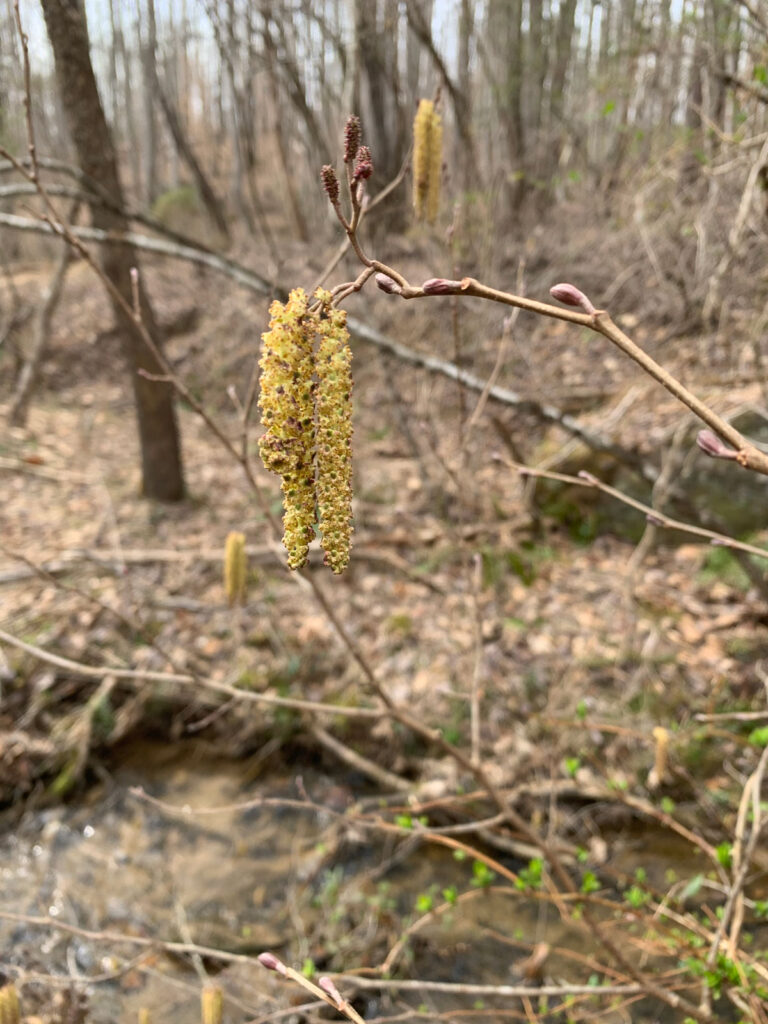A few notable things about this shrub: it’s a nitrogen fixer, which can be helpful for creek and stream reclamation projects. In addition, it’s got some cool reproductive things going on – both catkins (the long yellow male parts) release pollen to the wind and then disappear. The strobiles, which are the female parts (and look like tiny pinecones) contain the seeds. These strobiles might stay on the shrub up to a year, which makes identification of the alder helpful in all seasons.
Based on fossil pollen, research shows alders have been in North America for at least 65 million years. I guess they can be considered native.
This helpful shrub flourishes in muck and super wet areas, and fixes nitrogen in a few ways: at the roots in a symbiotic relationship with bacteria, as well as from leaf-fall, as the nitrogen-rich leaves release substantial amounts of nitrogen into the soil in the fall and winter, which can be used by neighboring plants. Seems like a generous plant. Because of all of this, I’m giving this shrub a thumbs up!
Alternate Names: Smooth Alder, Alder, Hazel Alder, Brookside Alder, Tag Alder, Common Alder, Black Alder Size: 6-12' tall Family: Betulaceae (Birch Family) Habitat: Very wet soil (like, at the side of a brook perhaps?), sandy loam, mucks. Identifiers: A shrub with multiple stems, and thin gray smooth bark. Dark green foliage in summer, alternate pinnate leaves, elliptic, with a serrate margin.













